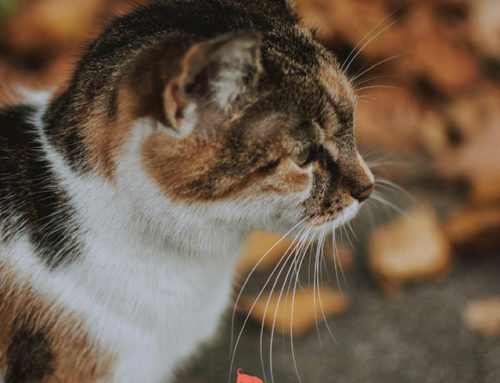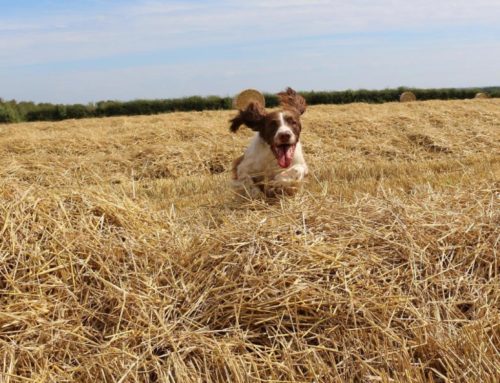This months blog is all about rabbits as we celebrate Rabbit Welfare Awareness Week (28th June-4th July)
RAW is an annual campaign which aims to educate rabbit owners on all aspects of their care.
As we’re learning more about how to care properly for our rabbits, including feeding them a healthy diet and getting them vaccinated, rabbits are living longer.
What are the five welfare needs of rabbits?
Providing a small amount of pellets, plentiful quantities of good quality hay and greens.
Create the perfect housing for your rabbits with plenty of space to
hop around!
Discover more about what makes your rabbits tick and how to fill their needs. They are very intelligent animals which can even be trained to do tricks!.
Rabbits are social animals and should be kept in suitable pairs or
groups.
Know what to look out for and the signs of common health problems in rabbits.

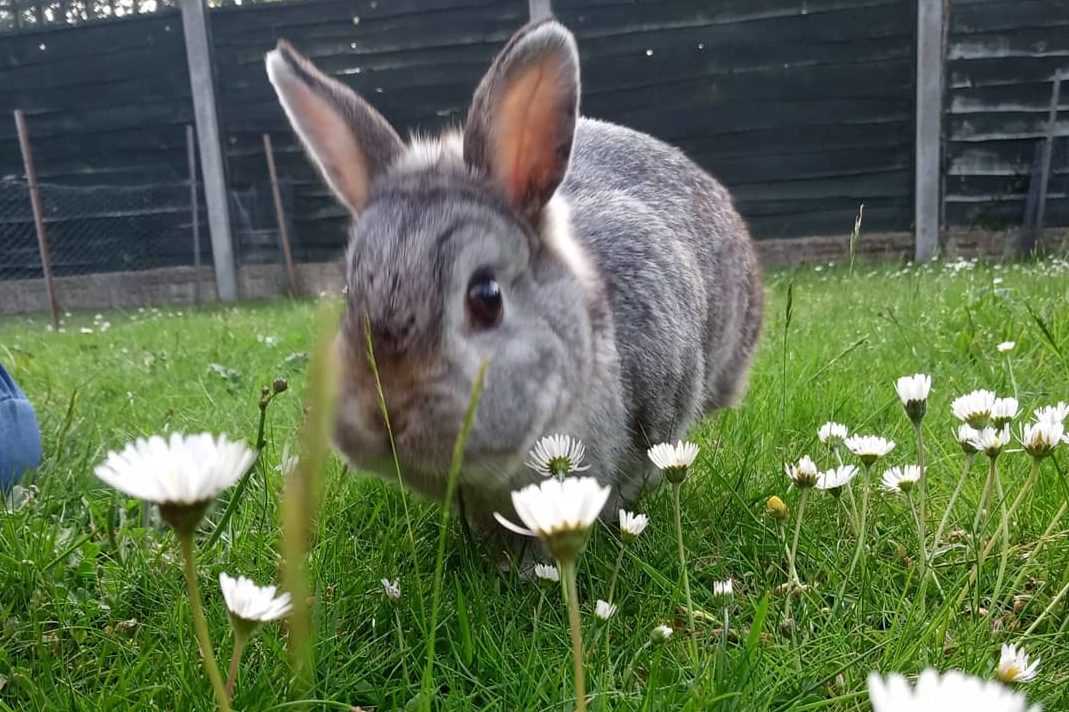
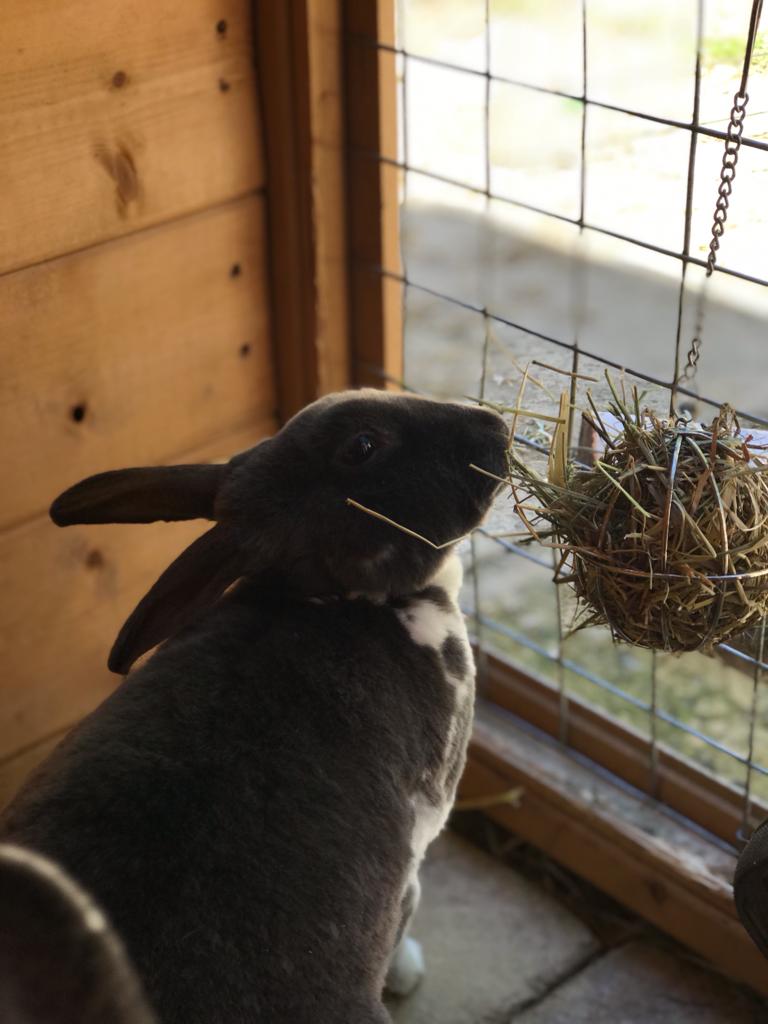
Preventative Healthcare
Vaccinations
Myxomatosis is a highly infectious and usually fatal virus that is transmitted by mosquitoes, fleas or by close contact with an infected rabbit. Myxomatosis kills many rabbits in the UK every year, and all rabbits are susceptible whether kept indoors or outdoors.
Signs of myxomatosis include:
- Red swollen eyes
- Conjunctivitis
- Fever
- Loss of appetite
- Lethargy
Whilst there is a very small chance that a vaccinated rabbit can still develop myxomatosis, the disease in this instance is far less severe and has a much higher chance of successful treatment.
An unvaccinated rabbit surviving a myxomatosis infection is very unusual. There is no specific treatment for the virus, and sadly only supportive care such as fluids and antibiotics can be provided to help ease the pain and discomfort. As supportive care is so rarely successful in myxomatosis cases, euthanasia is usually recommended.
Rabbit Haemorrhagic Disease
Rabbit Haemorrhagic Disease is also known as Rabbit Viral Haemorrhagic Disease and has several acronyms: RHD, RVHD, VHD and RHD1. This virus is extremely contagious and sadly once a rabbit is infected it is almost always fatal.
Signs are often difficult to detect because RHD can kill a rabbit very quickly, which is why any sudden rabbit death should be regarded as suspicious.
RHD causes bleeding to the internal organs of the rabbit so if signs are seen these can include:
- A fever
- Loss of appetite
- Lethargy
- Difficulty breathing
- Blood stained discharge from the nose or mouth
- Seizures (fits)
The RHD virus is very resistant and can remain active in the environment for many months. It can be transmitted through both direct and indirect contact. Transmission is quick and does not require prolonged contact; an infected rabbit can pass the virus directly to another by nose to nose contact or via food bowls, bedding, urine and faeces.
Insects, birds & rodents can all spread these diseases to rabbits and humans can carry the virus on their clothes if they have been in contact with an infected rabbit.
There is a second strain of Rabbit Haemorrhagic Disease, often referred to as RHD2.
RHD2 has some differences to RHD1, but the virus is still associated with severe internal bleeding, rapid death in many cases and can remain active in the environment for a long time.
The disease is seen across the UK and vaccinating rabbits against this condition is extremely important.
Neutering
Castration of males and spaying of females is vital to helping rabbits live a long and healthy life.
Neutering allows rabbits to be kept in the pairs or groups that are so vital to their welfare; prevent’s life-threatening health problems (especially in female rabbits) and of course prevents unwanted pregnancies.
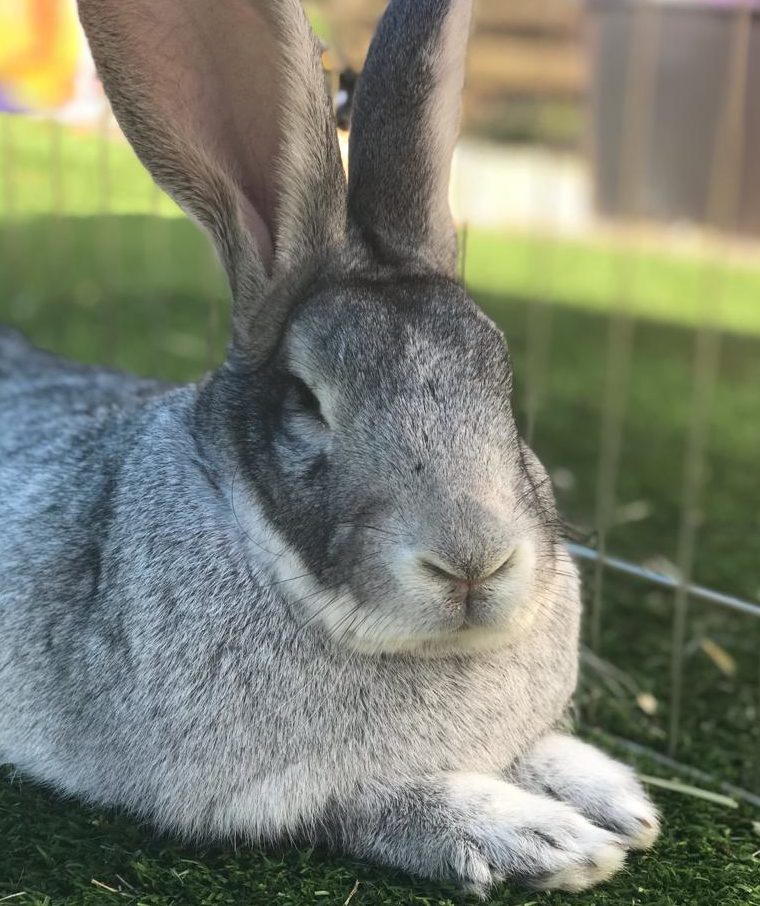
Common Conditions
Dental disease and ileus
Rabbits’ teeth continue to grow and can often be the cause of a reduced appetite as they become long, misallied or even grow into the cheeks when spurs form. This naturally makes it uncomfortable for rabbits to eat and can cause ileus.
Other causes of ileus can include osteoarthritis pain, urine stones and obstruction.
Ileus is a life-threatening condition where the normal movement (peristalsis) of the guts stops, also known as ‘gut stasis’.It is a fairly common emergency condition in rabbits and all owners should be aware of the clinical signs of the disease in order to act quickly and for a positive outcome.
Often the first sign a rabbit has stasis is a reduction in appetite or refusing to take food. This is often associated with a reduced number of faecal pellets (poo) or failing to produce any at all. They may also show signs of pain/discomfort such as tooth grinding, hunching up or stretching-out postures.
lf you notice a reduced appetite or reduced bowel movements please do act quickly and contact us so we can examine your rabbit including performing a conscious dental examination.
Flystrike
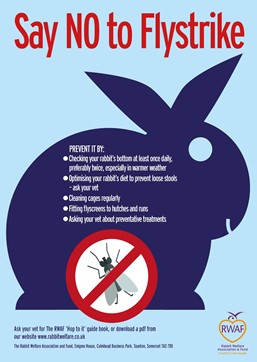
Arthritis in older rabbits
Arthritis (osteoarthritis is most commonly seen in rabbits) is inflammation of the joints. It’s a very painful condition. It’s something we might expect to see in older rabbits but in fact they can suffer from it when they’re still quite young. It’s likely that any rabbit over 6 will have some arthritis, but it may be present even in 2 year olds.
Rabbits are prey animals and they hide pain, so if your rabbit has arthritis you may not realise until it’s in a lot of distress.
Giant breeds tend to become arthritic at a relatively younger age than smaller breeds.
What to look out for?
Watch your rabbit after it has been lying still for a while, do the first few steps look stiff?
- Is there any wobbling?
- Is there limping?
- Can your rabbit eat caecotrophs direct from its bottom, or does it have to scoot round and eat them from the floor?
- Does your rabbit’s bottom get dirty or urine soaked? Rabbits with arthritis aren’t able to angle their pelvis properly when they pass urine and that can mean they can’t completely empty their bladders. This can cause bladder sludge or stones.
- Does your rabbit move around less when it’s cold or damp?
- Does your rabbit stop eating, and you aren’t able to pinpoint why?
- Is there unexplained aggression either towards you or towards a bonded partner?
If the answer to some of these questions is yes, then it would be worth bringing in your rabbit to the surgery so that we can assess for arthritis.
Pain management is crucial in osteoarthritis cases. It is vital to keep your rabbit comfortable, mobile and able to eat. Although there are no painkillers licensed for rabbits, there are products that work very well, and can be given long-term. We will need to monitor your rabbit fairly regularly to ensure the condition is properly controlled and your rabbit isn’t suffering side effects from the drugs. Some arthritic rabbits will continue to take painkillers for the rest of their lives.
How to help
- Ensure your rabbit isn’t overweight. Obesity will put extra strain on the joints.
- If floors are slippery, provide some covering so that your rabbit doesn’t slip and strain already inflamed joints
- Provide a litter tray that is low at the front, so it’s easier for your rabbit to get in and out. You can cut down one side of an ordinary tray, or else try a potting tray that would normally be used for gardening. If you cut down a tray, sand down the cut edges so it isn’t sharp.
- Keep your rabbit warm in cold and damp weather. Provide a microwaveable heat pad in very cold weather, and overnight in the winter. If your rabbits live outside, you might start to bring them indoors during the winter.
- Provide ramps or steps to get up to hutches etc. Make sure they aren’t slippery.
- As with any rabbit, ensure that there’s plenty of exercise space. Gentle exercise is good for keeping arthritic joints supple.
- Keep a careful eye on your rabbit’s bottom. It’s difficult for arthritic rabbits to bend around and clean themselves, so they are at increased danger from Flystrike.
- Keep areas as free as possible from obstacles. A weak leg may get tangled in hay or toes may be stubbed on things your rabbit has to pass. It will be harder for an arthritic rabbit to hop over obstacles so a clear floor area is a great help.

Finally we are delighted to announce our Newport Hospital has been accredited as a Silver Rabbit Friendly Practice.
In order to be awarded with rabbit friendly status our practice had to meet certain criteria set out by the Rabbit Welfare Association & Fund (RWAF). This results in either a Silver or Gold status as well as inclusion on the RWAF Rabbit Friendly Vet List.




